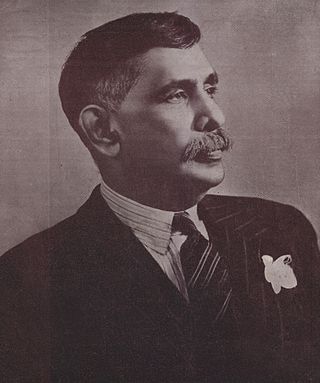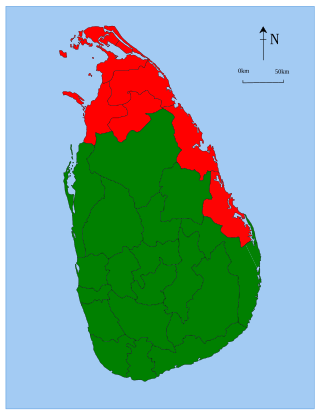| |||||||||||||||||||||||||||||||
151 seats in the House of Representatives of Ceylon 76 seats were needed for a majority | |||||||||||||||||||||||||||||||
|---|---|---|---|---|---|---|---|---|---|---|---|---|---|---|---|---|---|---|---|---|---|---|---|---|---|---|---|---|---|---|---|
| |||||||||||||||||||||||||||||||
| |||||||||||||||||||||||||||||||
Snap parliamentary elections were held in Ceylon in July 1960.
| |||||||||||||||||||||||||||||||
151 seats in the House of Representatives of Ceylon 76 seats were needed for a majority | |||||||||||||||||||||||||||||||
|---|---|---|---|---|---|---|---|---|---|---|---|---|---|---|---|---|---|---|---|---|---|---|---|---|---|---|---|---|---|---|---|
| |||||||||||||||||||||||||||||||
| |||||||||||||||||||||||||||||||
Snap parliamentary elections were held in Ceylon in July 1960.
The March 1960 election had left neither of Ceylon's two major parties with a majority, so another election was inevitable.
The Sri Lanka Freedom Party, which had been in disarray since the murder of its leader S.W.R.D. Bandaranaike the previous year, settled on his widow, Sirimavo, as its new leader. She pledged to continue her husband's policies, notably the Sinhala Only Act, and to proceed with repatriation of the estate Tamils to India. However, she promised to reach a compromise with the Federal Party.
The United National Party, led by Dudley Senanayake, refused to compromise with the Federal Party. It also differed with the SLFP over economic policy. The SLFP called for a socialist program of nationalization of both private enterprises and religious schools; the UNP preferred to leave both in private hands.
The SLFP obtained a bare majority, despite getting a lower share of the popular vote than the UNP, and Mrs. Bandaranaike became prime minister. This was the first time in history a woman led her party to victory in a general election and thus becoming Prime Minister.
| Party | Votes | % | Seats | |
|---|---|---|---|---|
| United National Party | 1,144,166 | 37.19 | 30 | |
| Sri Lanka Freedom Party | 1,022,171 | 33.22 | 75 | |
| Lanka Sama Samaja Party | 224,995 | 7.31 | 12 | |
| Illankai Tamil Arasu Kachchi | 213,733 | 6.95 | 16 | |
| Mahajana Eksath Peramuna | 106,816 | 3.47 | 3 | |
| Communist Party of Ceylon | 90,219 | 2.93 | 4 | |
| All Ceylon Tamil Congress | 46,804 | 1.52 | 1 | |
| Lanka Democratic Party | 30,207 | 0.98 | 2 | |
| National Liberation Front | 14,030 | 0.46 | 2 | |
| Others | 183,728 | 5.97 | 6 | |
| Total | 3,076,869 | 100.00 | 151 | |
| Registered voters/turnout | 3,724,507 | 75.9 | ||
| Source: Nohlen et al. [1] | ||||

Parliamentary elections were held in Ceylon between 23 August and 20 September 1947. They were the first elections overseen and administered by the newly formed Department of Parliamentary Elections.

Ganapathipillai Gangaser Ponnambalam was a Ceylon Tamil lawyer, politician and cabinet minister. He was the founder and leader of the All Ceylon Tamil Congress (ACTC), the first political party to represent the Ceylon Tamils.

Parliamentary elections were held in Sri Lanka on 21 July 1977. The result was a landslide victory for the United National Party, which won 140 of the 168 seats in the National State Assembly.

Parliamentary elections were held in Ceylon in 1970.

Parliamentary elections were held in Ceylon in March 1965.

Parliamentary elections were held in Ceylon in 1956. They were a watershed in the country's political history, and was the first elections fought to realistically challenge the ruling United National Party. The former Leader of the House, S.W.R.D. Bandaranaike who was passed over after the death of the first Prime Minister D. S. Senanayake, crossed over to the opposition to form the Sri Lanka Freedom Party to launch his bid for Prime Minister.

Parliamentary elections were held in Ceylon in 1952. It is notable for being the second and final election overseen and administered by the Department of Parliamentary Elections before its merger in 1955.

Parliamentary elections were held in Ceylon on 19 March 1960.

Samuel James Veluppillai Chelvanayakam was a Ceylonese lawyer, politician and Member of Parliament. He was the founder and leader of the Illankai Tamil Arasu Kachchi (ITAK) and Tamil United Liberation Front (TULF) and a political leader of the Ceylon Tamil community for more than two decades. Chelvanayakam has been described as a father figure to Ceylon's Tamils, to whom he was known as "Thanthai Chelva".

Subaiya Natesan was a Ceylonese politician, Member of State Council, Member of Parliament and senator.
The Bandaranaike–Chelvanayakam Pact was an agreement signed between the Prime Minister of Sri Lanka S. W. R. D. Bandaranaike and the leader of the main Tamil political party in Sri Lanka S. J. V. Chelvanayakam on July 26, 1957. It advocated the creation of a series of regional councils in Sri Lanka as a means to giving a certain level of autonomy to the Tamil people of the country, and was intended to solve the communal disagreements that were occurring in the country at the time.
The Ministry of Tourism and Lands is the central government ministry of Sri Lanka responsible for land and parliamentary reforms. The ministry is responsible for formulating and implementing national policy on lands and other subjects which come under its purview. The current Minister of Tourism and Lands is Harin Fernando. The ministry's secretary is W.A. Chulananda Perera.

Alexander Perera Jayasuriya was a Ceylonese politician. He was a Minister of Health, Senator and Member of Parliament. He was one of the founders of the Sri Lanka Freedom Party.

The 1982 Sri Lankan national referendum took place on December 22, 1982, giving the people of Sri Lanka the option to extend the life of parliament by 6 years. It was the first and so far only national referendum to be held in Sri Lanka. The referendum was called for by President J. R. Jayawardene, who had been elected to a fresh six-year term as President in October 1982. With the life of the current parliament due to expire in August 1983, Jayawardene faced the possibility of his ruling United National Party losing its massive supermajority in parliament if regular general elections were held. He therefore proposed a referendum to extend the life of parliament, with its constituents unchanged, thereby permitting the United National Party to maintain its two-thirds parliamentary majority.

Ilankai Tamil Arasu Kachchi is a Sri Lankan political party which represents the Sri Lankan Tamil ethnic minority in the country. It was originally founded in 1949 as a breakaway faction of the All Ceylon Tamil Congress (ACTC). In 1972, ITAK merged with the ACTC and Ceylon Workers' Congress (CWC) to form the Tamil United Front, which later changed its name to the Tamil United Liberation Front (TULF). ITAK remained dormant until 2004 when a split in the TULF resulted in ITAK being re-established as an active political party. ITAK is a constituent party of the Tamil National Alliance.

The S. W. R. D. Bandaranaike cabinet was the central government of Ceylon led by Prime Minister S. W. R. D. Bandaranaike between 1956 and 1959. It was formed in April 1956 after the parliamentary election and it ended in September 1959 with Bandaranaike's assassination.
The Second Sirimavo Bandaranaike cabinet was the central government of Ceylon led by Prime Minister Sirimavo Bandaranaike between 1970 and 1977. It was formed in May 1970 after the parliamentary election and it ended in July 1977 after the opposition's victory in the parliamentary election. The second Sirimavo Bandaranaike cabinet saw Ceylon severing the last colonial ties with Britain as the country became a parliamentary republic in May 1972. The country was also renamed Sri Lanka.
Velupillai Kumaraswamy was a Ceylon Tamil lawyer, politician and Member of Parliament.
The Ministry of Health is the central government ministry of Sri Lanka responsible for health. The ministry is responsible for formulating and implementing national policy on health, nutrition, indigenous medicine and other subjects which come under its purview.

Konara Mudiyanselage Podiappuhamy Rajaratne was a Ceylonese lawyer, politician and parliamentary secretary.
{{cite web}}: CS1 maint: unfit URL (link){{cite web}}: CS1 maint: unfit URL (link)